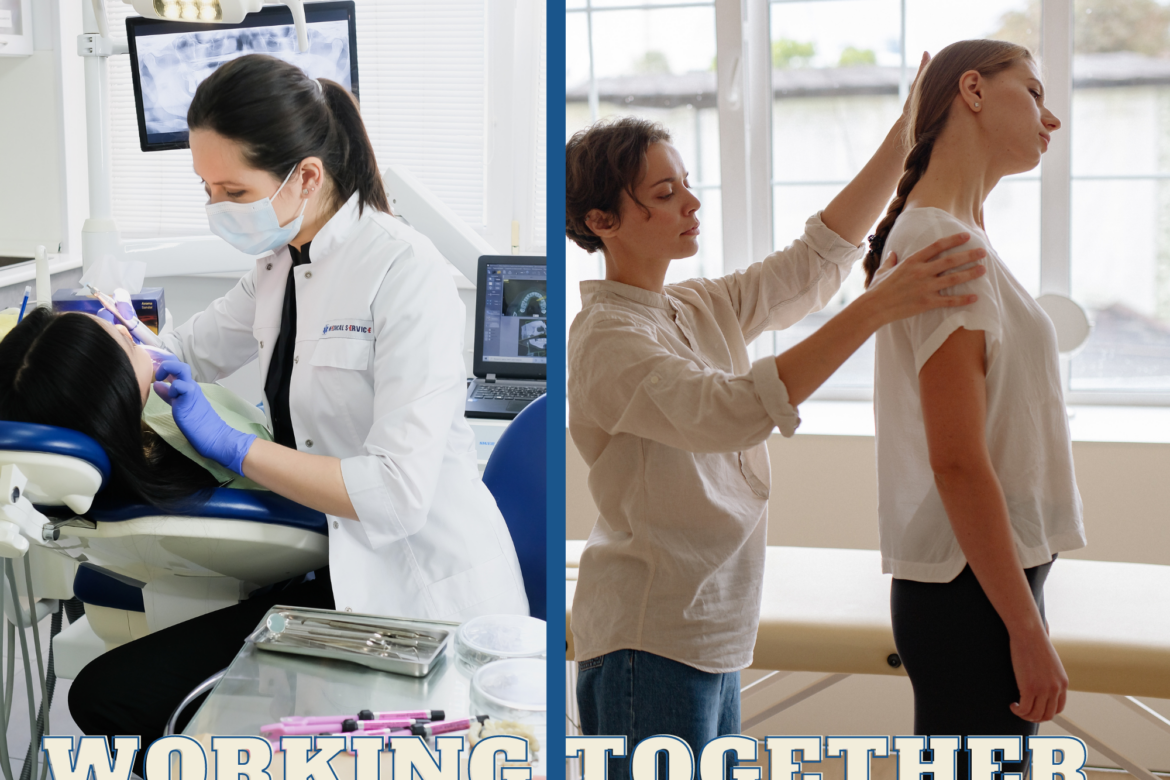Working Together
Leading specialists agree that proper management of patients with Temporomandibular Disorders (TMD) requires a collaborative, multidisciplinary approach to care. This includes conservative care under the guidance of a trained Physical Therapist. Most people, even Dentists are unaware that trained and certified Temporomandibular Disorder Physical Therapists can treat jaw pain. Dentists and PTs working together on jaw pain can lead to much better patient outcomes.
Signs and Symptoms of TMD
Signs and symptoms of TMD manifest in many ways. Often they are the result of multiple factors, including occlusion, muscles of mastication, and the temporomandibular joint. In addition, spinal dynamics, facial and cervical muscles, posture, and development issues should be looked at and considered.
The cervical spine may mimic symptoms thought to originate from the TMJ and/or muscles of mastication. Where myofascial trigger points can cause localized and referred pain patterns in the craniofacial region. Recent studies show that 93% of patients with migraine headaches present with clinically relevant cervical myofascial trigger points compared to only 29% of control subjects.
TMD Criteria
The TMD diagnostic criteria, as defined by Dworkin and LeResche, specifically include myofascial pain as muscle pain with or without limited mouth opening. Facial and cervical muscles refer to pain in the head and face. Specifically, the temporalis and masseter muscles can refer to pain directly to the teeth and gums. This may mimic dental pain, tension headaches, and migraines. Forward head posture contributes to cervical and temporomandibular joint dysfunction in as many as 88% of patients with head, neck, and jaw pain.
Dentists Role
When considering all of these factors, it is important to note that dentists and dental hygienists are in a very unique position to identify dysfunction in the craniofacial region. Most patients attend dental visits for cleanings and check-ups twice a year. At these visits, the hygienist or dentist reviews the presence or not of neck pain, headaches, facial pain, or even tooth pain. If a dental issue is ruled out, via x-rays and examinations, there may be a muscle dysfunction causing the issue. Other indicators that should be observed include lateral pole tenderness of the condylar head and tooth sensitivity not caused by a tooth-related problem. It is also important to look at limitations in opening or mandibular motion and painful clicking/popping/other noises.
This would be an appropriate time to refer for Physical Therapy, specifically, a Physical Therapist trained in TMD and Craniofacial Pain. There are a couple of certifications to look for, such as Cranio-Facial Certification (CFC), or Certified Cervical & Temporomandibular Therapist (CCTT). These certifications help identify those Physical Therapists who have extensive training in TMD and the cervical spine.
Physical Therapist’s Role in Jaw Pain
As part of the PT examination, it is essential to identify the primary dentist. This will ensure an open conversation and a collaborative approach to a conservative treatment plan. This approach allows for the collaboration between Physical Therapy sessions and any splinting or other dental care that may benefit the patient. Working together can help to maximize recovery time, reduce the patient’s pain, and improve oral function.
TMD, headaches, and facial pain can be challenging to manage. However, with a team approach to dental care and physical therapy, we make a significant improvement in their lives and allow them to Enjoy More Freedom!
To set up a visit with one of Freedom PT’s trained TMD specialists, click here.

